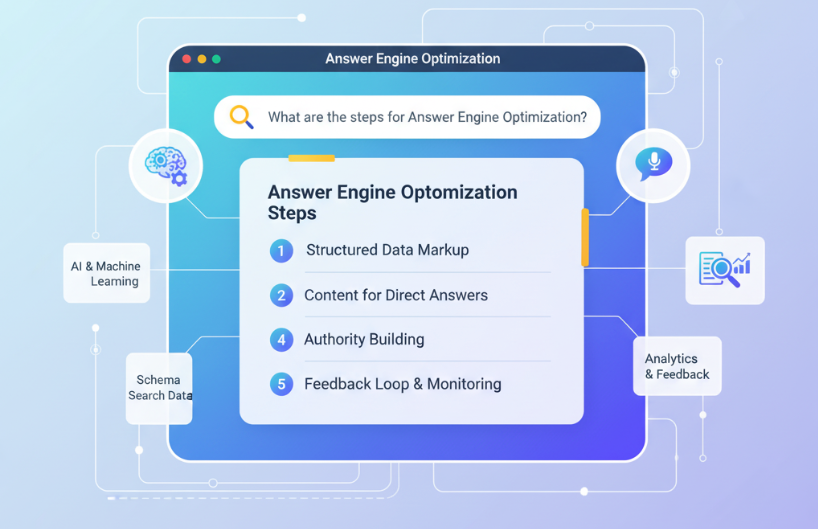Ok... AEO Isn’t a Scam — If You Get It Right
There’s a lot of noise about Answer Engine Optimization (AEO) lately—some calling it the next big thing, others dismissing it as overhyped. But AEO is very much real, and it’s already starting to move the needle—for those who do it well. Here’s the proof, the nuance, and the “how” behind it.
What Is AEO (Answer Engine Optimization)?
Definition: AEO means structuring your content so that AI‐powered systems (ChatGPT, Perplexity, Google’s AI Overviews, voice assistants, etc.) can use it as a source when answering user queries. It goes beyond traditional SEO.
Key components include: concise & accurate answers, structured content (FAQs, HowTo, schema markup), conversational style, anticipating follow‐ups, being cited by trusted/canonical sources.
Relation to SEO: AEO doesn’t replace SEO. It complements it. Traditional SEO (keyword optimization, backlinks, site architecture, technical optimizations) remains essential. AEO builds on SEO’s foundation but shifts some focus—especially on how content is discovered without the traditional click.
What the Data Shows: Yes, It’s Already Having Impact
You asserted some things that the data more or less supports, though often with important caveats. Here are actually well‐documented findings:
Referral Traffic from ChatGPT & AI Tools Ahrefs’ recent analysis of ~44,000 sites showed:
Google still drives ~41.9 % of web traffic in their sample;
ChatGPT accounts for ~0.19 % of traffic.
But that 0.19 % is growing fast—4-5× faster than some Google growth metrics in the same period.
Traffic & Conversions Are Modest but Non-zero In Ahrefs’ study, AI referral traffic overall (ChatGPT + Perplexity + Gemini etc.) is small (~0.1 %) compared to Google, but not negligible. And conversion attribution shows some real impact: registrations / signups / new users self-reporting referral via AI tools.
Growth Trends The growth rate is what makes AEO interesting. Even though the raw share is tiny, the speed of growth—both in tools incorporating AI answer features, and in tracking systems—is suggesting AEO will matter more.
What Actually Works: How to Do AEO Right
If you decide to invest in AEO, here are the steps / tactics that seem to be working:
Audit existing content for “answer readiness” Find pages / blog posts that already answer questions. Could these be structured as FAQs, How‐To steps, or have section headings that are clear, concise? Can you add answer snippets up top?
Implement structured data (schema markup) Especially FAQ, Q&A, HowTo schemas. These help AI systems / answer engines parse content. Also helps voice assistants.
Produce content in conversational / question-answer format Think: what question might a person ask ChatGPT or say to their voice assistant? Use that style in content. Provide short, direct answers, followed by more context. Anticipate follow-ups (“People also ask …”).
Get your brand cited on third-party sites Being referenced on trusted sites, in press, in podcasts, on forums (Reddit etc) helps. Because AI systems often draw on multiple sources or pick sources deemed authoritative. If your name/brand appears in those, you increase your chances of being used in AI responses.
Monitor AI / chat referrals, citations Use GA4 (or other analytics) to try to track traffic coming from ChatGPT / other AI tools. Set up dashboards or reports. Also watch for “how did you hear about us” data. Monitor whether your content is showing up in AI response summaries or featured snippet-like positions.
Don’t ignore traditional SEO fundamentals AEO will only go as far as your content and site are fundamentally sound: good quality, trustworthy, mobile-friendly, fast, good UX, etc. Authority signals (backlinks, domain trust) still matter.
Why It’s Fair to Say “AEO Is Not a Scam”
Putting all this together:
AEO isn’t hype alone; there is measured growth, and AI tools are already sending referrals, albeit small amounts.
It’s not a silver bullet: it won’t instantly replace Google traffic or make every site viral.
But for many industries/content types, including niche informational content, it can amplify reach and build brand presence in new places.
Those who call it a scam often haven’t tested metrics, or they fall prey to exaggerated promises from vendors. Or they assume “clicks are the only metric.”
Where AEO Will Likely Evolve (And What to Watch)
More AI systems will include live web citations—which will increase paths to click.
More tracking / attribution features for AEO will mature. (Right now, lack of visibility is a pain point.)
People will get better tools for “AI citation tracking” and “answer visibility” (not just usual rank / traffic).
The line between SEO and AEO will blur even more. Many SEO best practices will keep being essential.
Yes — AEO does require a shift in mindset. If you try to treat it as “SEO the old way with a new name,” or believe the hype without data, you’ll be disappointed. But if you follow people with actual data (e.g. good case studies, tool reports, reliable analytics), experiment, stay grounded in traditional SEO fundamentals, then AEO is absolutely real, useful, and something that forward-looking marketers should pay attention to.
